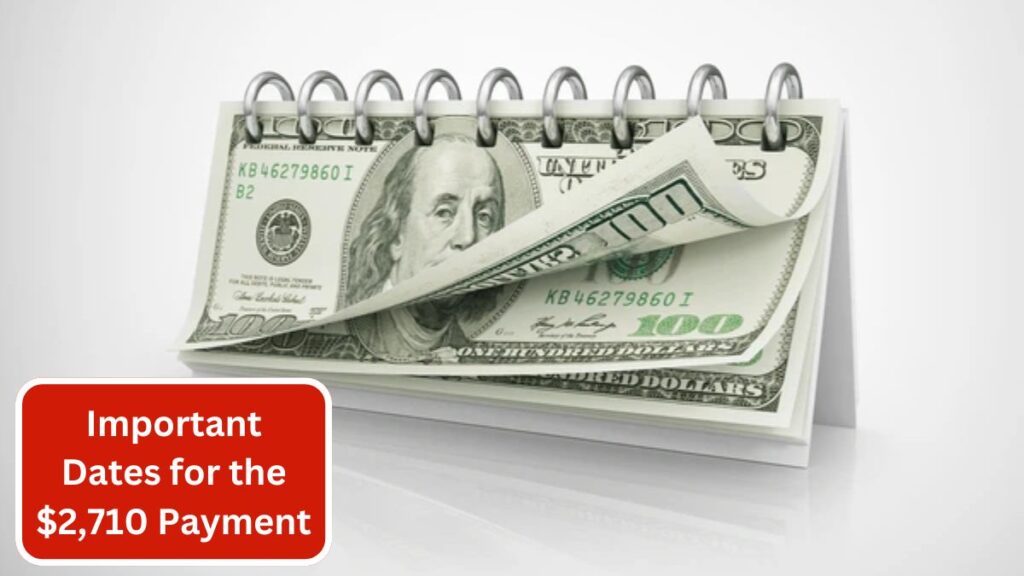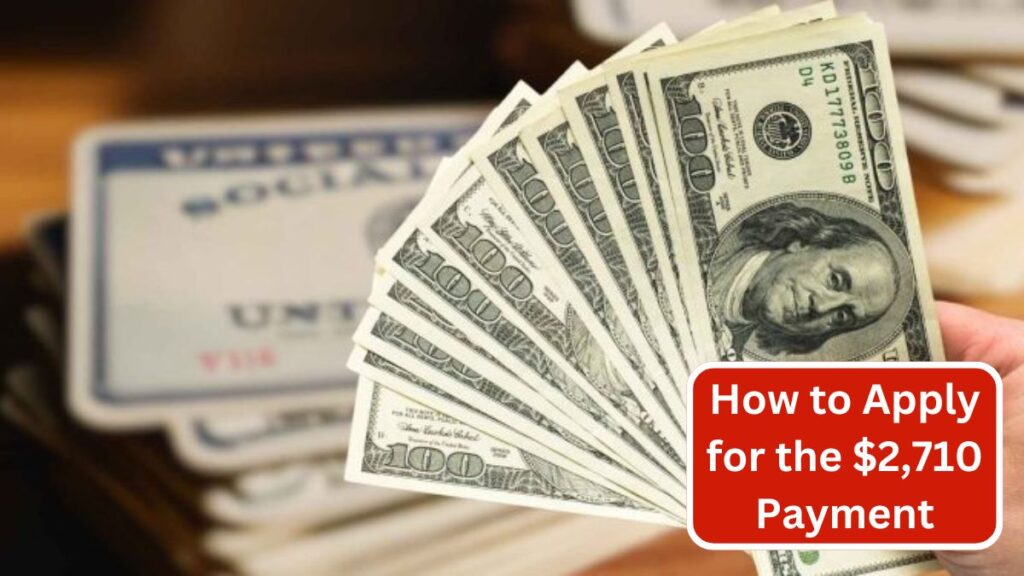In 2024, millions of Americans are expecting a direct payment of $2,710. This payment is part of various government programs aimed at helping individuals during tough times. If you’re wondering if you’re eligible for this payment and when you can expect to receive it, here’s everything you need to know.
What is the $2,710 Direct Payment?

The $2,710 direct payment is a one-time check that the government is sending to eligible individuals in 2024. This payment is part of efforts to support people who are facing financial difficulties. Many state governments, especially in places like California and Florida, are offering these payments to help with things like high living costs and inflation.
Who is Eligible for the $2,710 Direct Payment?
Not everyone will get the $2,710 payment. The eligibility rules vary depending on where you live, but generally, you must meet the following criteria:
- Income Limits: You need to have a specific income level. People with lower incomes are usually the ones who qualify.
- State-Specific Requirements: Some states have their own rules. For example, California’s program might have different rules compared to Florida.
- Filing Taxes: In most cases, you need to have filed your taxes for the previous year to be eligible for the payment.
Make sure to check with your local government or tax authority to see if you meet the eligibility criteria for this payment.
Important Dates for the $2,710 Payment

If you qualify for the $2,710 payment, you might be wondering when you will get the money. The government has set specific dates for these payments to be sent out. Here’s what you should know:
- November 2024: Many states will begin sending out the payments in November. The exact date will depend on your state’s payment schedule.
- Direct Deposit and Paper Checks: Payments may be sent via direct deposit or paper checks. If you have your bank details registered with the tax authorities, you may get the payment faster through direct deposit.
- Payment Windows: Some states may send payments in waves, so even if you’re eligible, you might not get your payment on the first day.
It’s important to keep an eye on official government websites for updates on when you’ll receive the payment.
| Topic | Details |
|---|---|
| Payment Start Date | Payments will begin in November 2024. Exact dates depend on the state and payment schedule. |
| Eligibility | Eligibility is based on income, filing status, and state-specific rules. Check with your state’s tax department or government websites. |
| Payment Methods | Payments can be received via direct deposit or paper check, depending on the information filed with the IRS or state authorities. |
| Do I Need to Apply? | Most eligible individuals will receive the payment automatically. Ensure your tax records are up to date to avoid delays. |
| What if I Haven’t Received My Payment? | If you haven’t received your payment, check the status online using official government tools or contact your state’s tax department or the IRS. |
| Filing Taxes | Filing taxes is usually required to be eligible. If you haven’t filed taxes recently, do so to qualify for the payment. |
| Updating Information | If you’ve moved or changed bank accounts, update your address and banking details with the tax authorities to ensure timely delivery of your payment. |
| Universal Payment Distribution? | No, not everyone will receive the $2710 payment. Eligibility is based on specific criteria such as income and residency. |
| Appealing Missing Payment | If you believe you should have received the payment but didn’t, you can appeal by contacting your state’s tax department or the IRS. |
How to Apply for the $2,710 Payment

In most cases, you don’t need to apply for the payment separately. If you’re eligible, the government will send it automatically based on your tax records. However, if you haven’t filed taxes recently or there is an issue with your information, you may need to apply or update your details.
To make sure you’re eligible and get your payment on time, follow these steps:
- Check your eligibility: Review the state or federal requirements.
- File taxes if needed: Ensure that you have filed your taxes for the most recent year.
- Update your information: If your address or bank details have changed, make sure to update them with the tax authorities.
What to Do if You Don’t Receive the Payment
If you believe you’re eligible but haven’t received your payment by the expected date, don’t panic. There are steps you can take:
- Check the Status: Visit the official government website to check the status of your payment.
- Contact Support: If there’s an issue, you can contact your state’s tax department or the IRS (if it’s a federal payment).
- File an Appeal: In some cases, if you believe you should have received the payment but didn’t, you can appeal or request a review of your case.
FAQs
When will the $2710 direct payment be sent out?
The $2710 direct payment will begin in November 2024. The exact date depends on your state and how payments are scheduled.
How can I check if I’m eligible for the $2710 payment?
Eligibility is based on your income, filing status, and state-specific requirements. Check with your state’s tax department or visit official government websites to confirm your eligibility.
How will I receive the $2710 payment?
Payments can be sent either through direct deposit or by paper check, depending on the information you have filed with the IRS or state authorities.
Do I need to apply for the $2710 direct payment?
In most cases, if you’re eligible, you will receive the payment automatically. However, ensure that your tax records are up to date to avoid any delays.
What if I haven’t received my payment by the expected date?
If you haven’t received your payment, you can check its status online using the official government tools. If necessary, contact your state’s tax department or the IRS for assistance.
The $2,710 direct payment is a helpful program for many people in the U.S., but eligibility and payment dates depend on where you live. Make sure to check your eligibility, file your taxes if necessary, and keep an eye on official updates for when the payments will be sent. If you don’t receive your payment, there are ways to track and resolve any issues. Stay informed and take action to ensure you get your payment on time.














